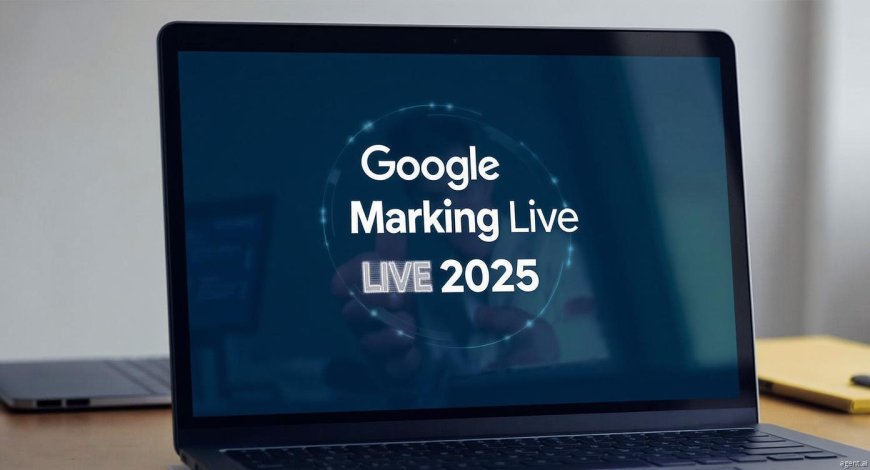AI Revolutionizes Campaign Creation at Google Marketing Live 2025

Google Marketing Live 2025 laid out a transformative vision: artificial intelligence is now the heartbeat of every successful digital campaign. Google unveiled a suite of AI-first tools designed to automate workflows, enhance targeting precision, and deliver richer creative content across its advertising platforms.
The focus this year wasnt just on innovationit was about scalability. Google Marketing tools are now built to support brands of all sizes, allowing them to tap into powerful AI infrastructure with minimal technical knowledge.
Gemini AI Powers Full-Funnel Campaign Execution
Google introduced deep integrations of Gemini AI across its ecosystem, promising real-time campaign design and deployment. Marketers can now enter plain text prompts describing their goals, and Gemini handles everything from targeting recommendations to visual asset suggestions.
This includes copy variations, call-to-action placement, and responsive format testing. Google Marketing is moving toward a model where AI doesnt just support campaignsit creates, runs, and refines them.
Evolved Shopping Ads with AI-Driven User Context
This years updates to Shopping Ads included enhanced personalization features. Google Marketing now uses machine learning models that predict user interest based on behavior, local trends, and even micro-moment data such as time of day and location.
These predictive models help determine which products to show and how they should be displayed. This means ads are now designed to be visually relevant and emotionally resonant for every shopper.
Search Campaigns Powered by Conversational Design
Google Marketing is reimagining Search Ads with a conversational approach. Marketers can describe their campaign vision in natural languagePromote high-end kitchen appliances to home chefs in Delhiand the system auto-builds a high-performing campaign.
Keywords, bidding models, and extensions are auto-generated and optimized. Google also introduced AI-powered headline writing and real-time keyword expansion, ensuring campaigns remain aligned with what consumers are actively searching.
Performance Max Upgrades: More Insight, More Control
Performance Max campaigns received a powerful upgrade. New diagnostic tools now break down campaign performance by asset type, channel, and audience segment. Marketers get granular visibility into whats workingand why.
A new budget pacing model in Google Marketing tools allows brands to monitor spend distribution and adjust in real time. The inclusion of historical seasonality models also makes Performance Max smarter, helping marketers allocate resources more effectively.
Generative AI Tools for YouTube Creatives
Creating video ads is easier than ever. With generative AI, marketers can now produce YouTube-ready videos in minutes. Simply describe your product and select a tonesuch as fun, professional, or emotionaland Google Marketing tools will deliver fully-edited videos with music, voiceover, and visual transitions.
These videos are optimized for YouTube Shorts, in-stream ads, and display video formats. Google also introduced automated thumbnail testing to improve CTR and watch time metrics.
Local Campaigns Gain Contextual AI Enhancements
Brick-and-mortar businesses will benefit from new smart local campaign capabilities. Google Marketing can now analyze real-time inventory, foot traffic patterns, and weather conditions to dynamically update ads.
For example, a caf experiencing a heatwave can automatically promote iced drinks during peak afternoon hours. These hyperlocal activations ensure campaigns are timely, context-aware, and conversion-optimized.
Ad Transparency and AI Auditing Features
Trust was a major theme this year. Google Marketing introduced transparency labels for AI-generated content. When users engage with AI-crafted ads, they will now see clearly marked disclosures about automation and AI involvement.
For marketers, a new AI Audit Center provides insight into which AI-generated decisions were applied and their performance impact. This is essential for accountability and brand safety in an age of rapid automation.
Visual and Multimodal Discovery Expands Reach
Google also expanded its support for multimodal search experiences. Users can now combine voice, image, and text queries in a single interaction. This opens new opportunities for marketers to create assets that respond across formats.
For example, a user snapping a picture of a laptop and asking show me similar models with better battery life will trigger dynamic product ads that align with the image and voice query. Google Marketing is now built to operate in this multi-sensory, multi-intent landscape.
Smarter Bidding and Predictive Optimization
AI-driven bidding strategies took a big leap forward. Google Marketing now uses predictive conversion modeling that adjusts bids based on weather forecasts, device usage, and user activity across Google properties.
This real-time adaptability ensures that marketers never over- or under-spend. Campaigns are continuously learning and recalibrating based on micro-signals that only machine learning can process at scale.

























